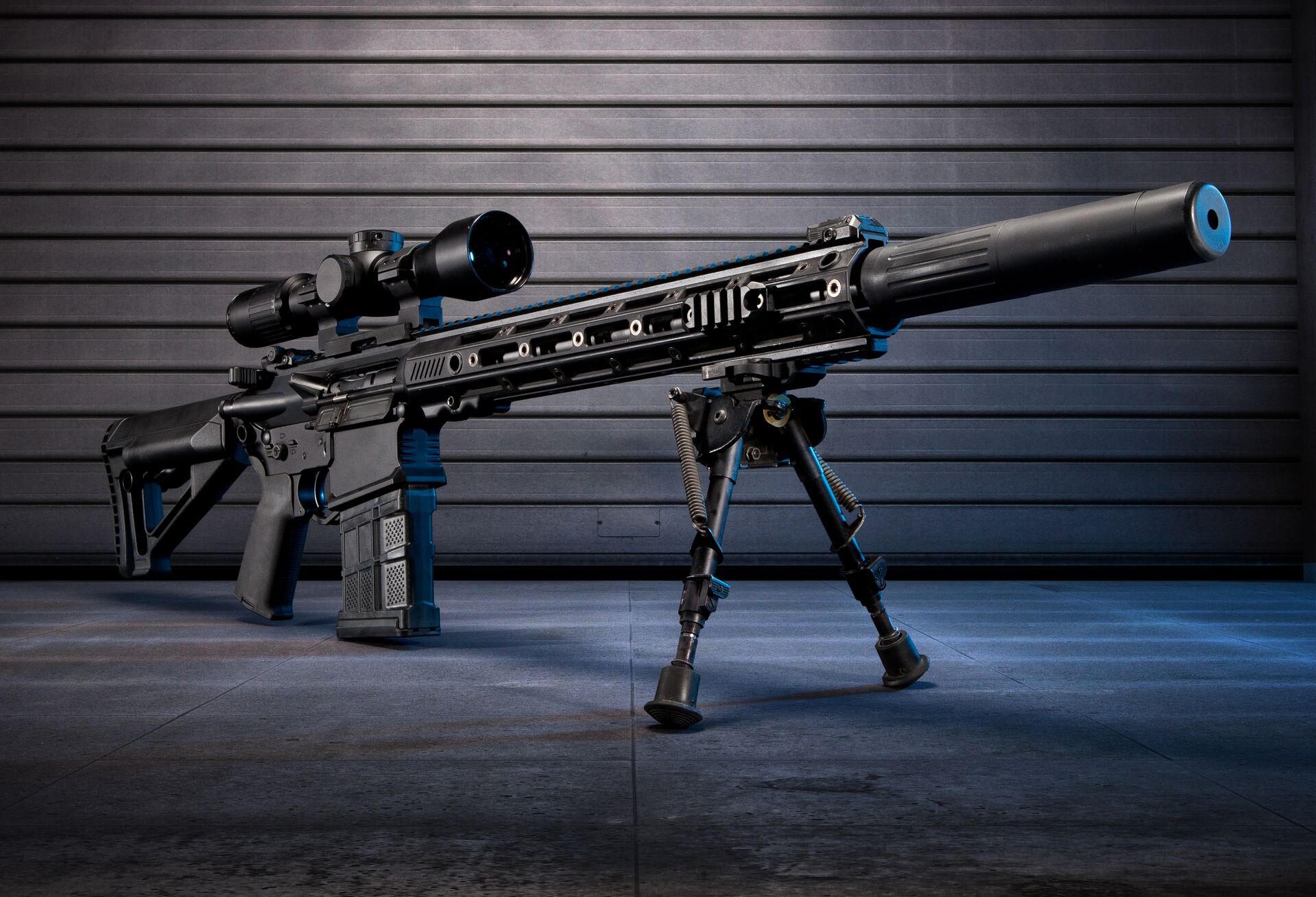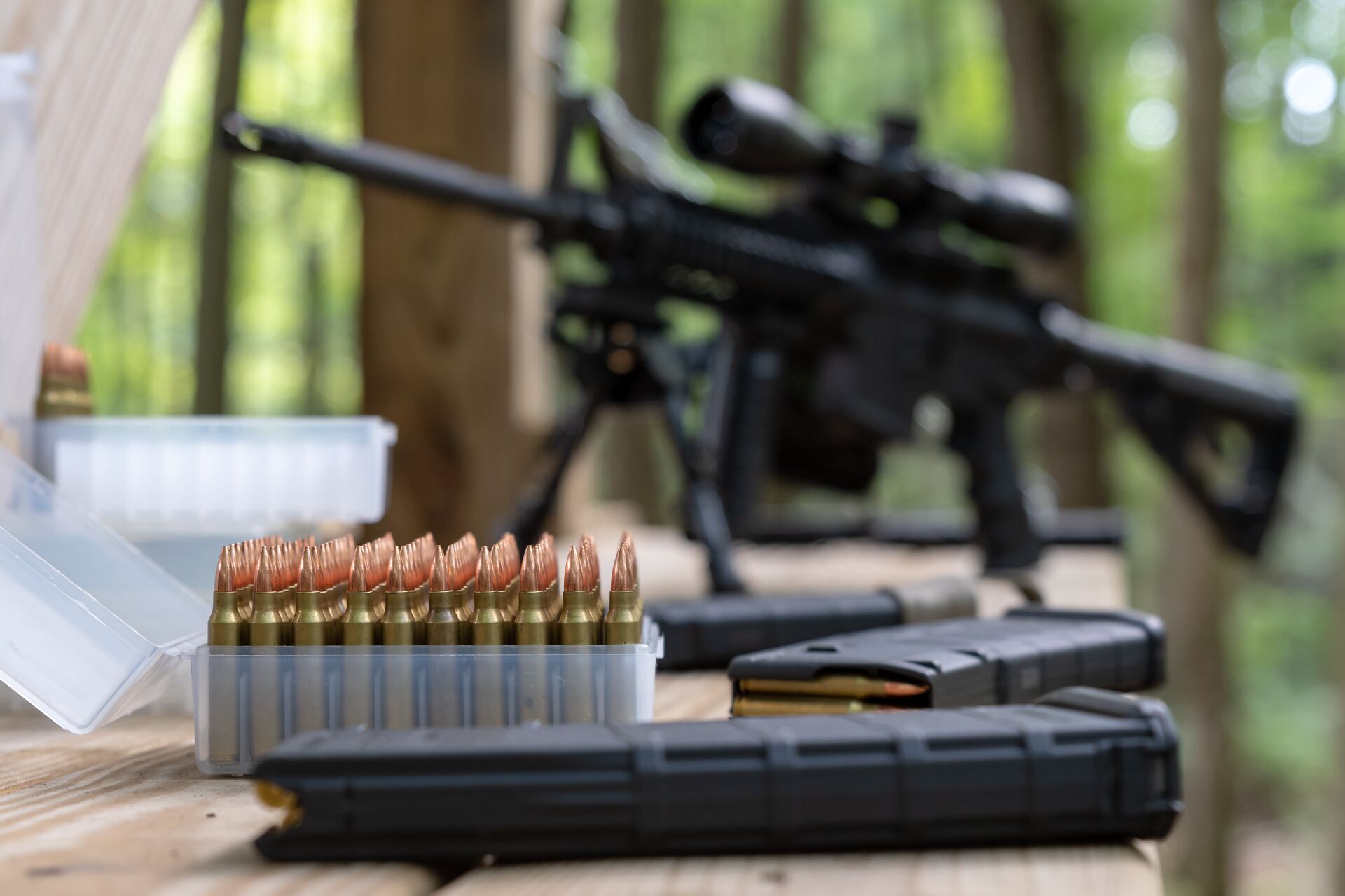What Does AR Stand For?

For hunters, a comprehensive understanding of firearms is not just a matter of choice but a crucial aspect of ethical hunting. It involves selecting the right caliber, adhering to state and federal gun laws, and ensuring firearm safety.
One term that often appears in the media landscape is "AR." But what does "AR" stand for?
In this blog, we're demystifying the confusion surrounding this term, diving into a little bit of history, and helping you better understand the role of an AR in the contemporary hunting landscape.

What Does AR Stand For When Talking Firearms?
There's a common misconception based on a false understanding of the acronym AR.
Contrary to popular belief, AR does not stand for "Assault Rifle" or "Automatic Rifle."
The actual meaning of the acronym AR is ArmaLite Rifle, which was named after the company that developed the original AR-10 and AR-15 models in the 1950s.
AR is frequently used as a catch-all term for any automatic firearm; however, this is a false understanding of the term and further adds confusion regarding the various types of firearms, manufacturers, and models.
The Historical Background of the AR
ArmaLite is a small arms manufacturer incorporated in 1954. The AR-10, designed in 1955, and the AR-15, created in 1959, were significant innovations paving the way for the invention of modern firearms used by U.S. forces.
These firearm types, particularly the AR-15, were significant in that they incorporated high-impact polymers and aluminum upper and lower receivers, moving away from the traditional wood-stocked steel rifles that were popular at the time.
Transition to Military Use and Popularization
Success didn't happen overnight, and it wasn't until ArmaLite sold the design to Colt in 1959 that things started to take off. Colt was selected to manufacture the standard issue AR-15, which became the M-16, perhaps most commonly known as the rifle for soldiers in the Vietnam War.
Colt, not wanting to limit or derail the success, also introduced civilian variations, which were popular for their versatility and customization options.

Features of the AR Rifle
The AR is one of the most versatile and adaptable rifles in modern firearms invention. It has global recognition and, yes, can be used ethically for hunting.
Modularity
AR rifles are not one-size-fits-all, and the ability to adapt your firearm to your hunting environment or target species is one of the leading benefits of an AR rifle. You can even build your own AR piece by piece if desired.
Customization
The modern AR rifle can be customized in several different ways. A spectrum of attachments and accessories, including sights, optics, grips, buttstocks, bipods, and more, is on the market, making it more accessible to a broader range of hunters.
Versatility
Whether you're hunting deer or other minor game, an AR rifle's configuration allows it to be adapted to your target species. Add appropriate scopes and dial in the sighting for an ethical shot.
Caliber Options
The AR-15 has a wide range of caliber options (too many to list). However, the most popular options are .223 Remington/5.56mm NATO, .300 Blackout, and 6.5 Grendel.
You can change the caliber of your AR-15 by changing the barrel, bolt, and magazine.
Ergonomics and Accuracy
Designed for ease of use and precise shooting, a major drawcard for this firearm is customization, meaning ARs can be adapted to the hunter rather than the hunter having to adapt to the rifle.
Make your AR work for you!
Use for Hunting
Due to its customization and effectiveness, the AR rifle is a popular hunting choice for vermin, predators, and even big game when adapted to the right caliber.
Its lightweight design and adaptability make it a strong option for both spot-and-stalk and stand-hunting. However, before taking your AR-15 out into the field, we recommend taking a hunting course and putting in some serious hours at the range to ensure safety and ethical hunting.

AR Legal Considerations
AR rifles are subject to legal regulations varying from complete bans to complete legality and everything in between.
These variations shift depending on the state, and hunters must be aware of and comply with local laws regarding hunting with AR rifles. Some states may require an age verification or background check, while others may limit the types of accessories.
Like regular firearms and hunting, you'll require a license and permits to hunt with an AR rifle, and a hunter safety course is commonly required before a permit is granted.

Learn More About Firearm Safety with Hunter-Ed
Whether hunting with an AR, bolt-action rifle, or a bow, what matters most is a safe hunt and getting home to those you love. Firearm handling carries a high level of personal responsibility and an understanding that you're liable for your own safety and the security of yourself and those around you.
While ARs are not legal in every state, we recommend a hunting education course, whether you prefer a firearm or a bow for hunting, to stay on top of best practices and safety procedures. Hunter-Ed makes it easy to learn crucial firearm safety practices and other hunting safety essentials with our online courses.
Plus, our courses are state-approved in all states – so you can meet the requirements for hunter education no matter where you hunt in the U.S.
Protect yourself and others every time you hunt. Find the course for your state and start learning with our free online study guide.






